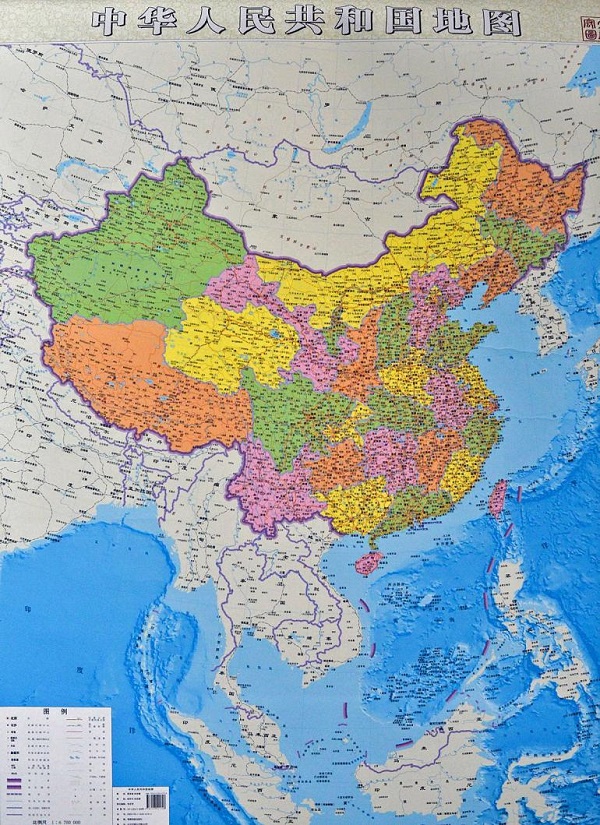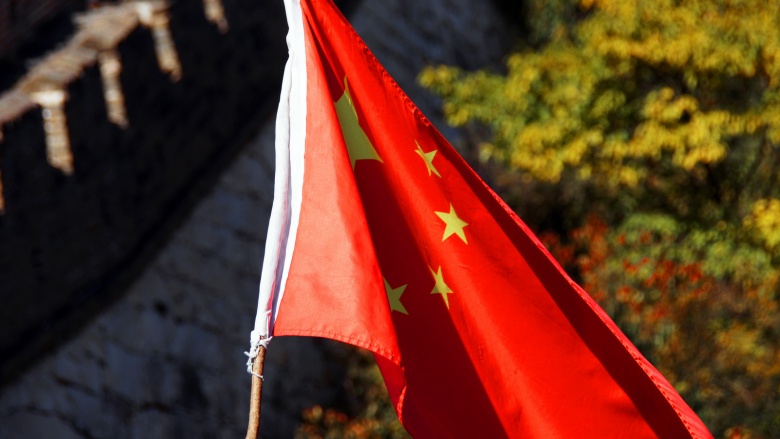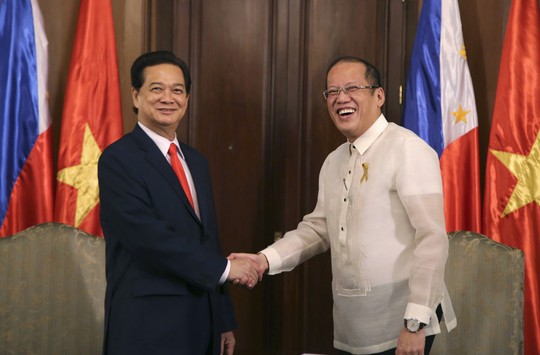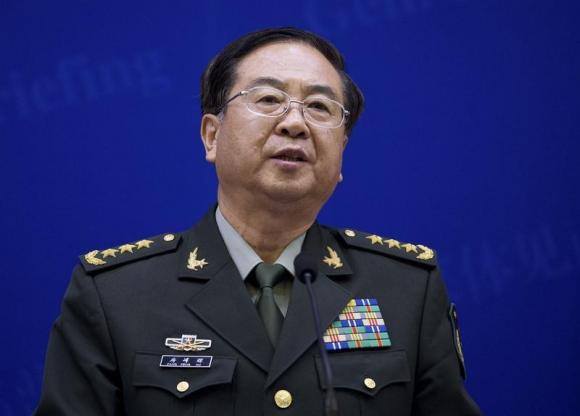
by Admin | Jul 1, 2014 | Statements, Highlights
Over the past two years, the world has watched tensions escalate in the East and South China Sea. Recent activities have further inflated these tensions and are threatening the peace, stability, maritime security and safety in the East and South China Sea.
In light of recent events, Boston Global Forum (BGF) Initiative has taken preliminary steps to help ease the tensions in the region. The Initiative will host an online international conference and humbly requests the participation of political leaders from the United States, China, Japan, Philippines, Australia, South Korea, Malaysia, Singapore, Indonesia, and Vietnam, as well as various CEOs of multinational corporations. Its objectives are to learn how the crises affect peace and stability (both political and financial), to find solutions to the problems, and to put forth a Framework for Peace and Security in the Pacific.
The conference will be on-going for one month, and BGF will apply a new conference model in order to work with hectic schedules of world leaders: each leader can provide his/her perspective via video recording or submit a statement in a document file. BGF will send each leader’s submissions to all participants and invite them to comment.
By this conference model, leaders do not need to attend the conference in person; they are only asked to spend some time preparing a statement and reading/viewing their colleagues’ perspectives on the crises. The most important aspect is that the leaders’ messages will be delivered to the world via the internet. The videos and speeches will be posted on the Boston Global Forum website, and we invite participants to continue the discussion more online.
The Conference
Leaders of countries are invited to participate in online conferences that contain several sessions organized within one (01) month. Each session has a different focus, and spans 60 minutes.Each speaker will give his/her solution and address key questions; other participants can then respond to the previous speaker’s statements.
▪ Time and Duration: July 2 to August 4, 2014.
▪ Moderator:
– Governor Michael Stanley Dukakis, Chairman, Boston Global Forum
– Joseph Nye, Professor, Harvard University; Member of Board of Thinkers, Boston Global Forum.
▪ Participants: Leaders of countries:
– The United States
– Japan
– China
– Vietnam
– The Philippines
– Indonesia
– South Korea
– Australia
– Malaysia
– Singapore
▪ Timeline:
1. Opening session – July 2, 2014
This session would introduce the Boston Global Forum’s Initiative, “Building a Framework for Peace and Security in the Pacific”.
Its purpose would be to give viewers a complete picture of the situation in the Pacific region and importance of the issue, and also to enlist their suggestions. BGF will be soliciting ideas/recommendations with the goal of identifying the key questions to be addressed about the Pacific region.
Some topic areas are mentioned, including maritime, economic, military tensions, etc., and BGF will look to the viewers for ideas/recommendations that will assist in framing the key questions in each of these arenas.
2. Multiple sessions – Dates to be determined
These sessions would review the initiative and the process of soliciting advice. Its main purpose would be to unveil the resulting key questions and explain their importance. BGF will be soliciting responses to the questions from top U.S. and Asian leaders and inviting comments on their responses.
These sessions would, one at a time, feature the prepared statements of Asian leaders. The first session would include the statement from the Prime Minister of Vietnam. Guests would respond to his statement and viewers would be invited to post comments.
The number of sessions of this type would be determined by the number of leader statements. The material from each of these sessions would be kept available on BGF website.
3. Penultimate Session
This session would offer preliminary answers to each of the key questions and invite comments/suggestions from viewers.
4. Final session – August 4, 2014
This session would offer the final recommendations for the crises, accompanied by white papers that could then be distributed.
This session would also be organized to commemorate the World War Centenary, feature speeches by Asian and Europe leaders and scholars to reflect on the First World War and to call for a prevention of new potential wars.
###

by Admin | Jun 29, 2014 | News

(BGF) – This Washington Post article reports on a map released by Chinese authorities showing all of China’s territorial claims. Author Ishaan Tharoor argues that the map may flare tensions in Asia, with China’s increasing assertiveness posing a growing threat to its neighbors, which is resulting in an arms race in Asia. Click here to read the full article on The Washington Post.
Could this map of China start a war?
By Ishaan Tharoor
Chinese authorities unveiled this week a new map showing the totality of Beijing’s territorial claims. It supplants an earlier map, which had a cutaway box displaying China’s declared claims over the South China Sea. Now, Chinese citizens can “fully, directly know the full map of China,” wrote the People’s Daily, a state paper. “Readers won’t ever think again that China’s territory has primary and secondary claims,” said the editor of the map press that published it.
On the face of it, the map shouldn’t be too much of a surprise to China’s neighbors. It counts Taiwan, which Beijing considers a renegade province, as part of China. It shows China’s longstanding belief in its suzerainty over the Spratlys and Paracels, the two main archipelagos of the South China Sea, which are contested to varying degrees by Vietnam, the Philippines and a number of other Southeast Asian nations. A 10-dash line (as opposed to China’s earlier nine-dash line) encircles most of the South China Sea, a body of water which sees some $5.3 trillion worth of trade pass through it every year.
Click here to continue reading.
by Admin | Jun 13, 2014 | News
(BGF) – Social media are thought to be systems where people create and receive information, and will prevail in the future. And yet, we have seen amazing examples of “nobodies” becoming “somebodies” overnight, and a piece of information can be retweeted million times, or shared to hundreds of people.
The Question is “Will the social media provide democratization of information?” John Wihbey, the managing editor of the Journalist’s Resource conducted a research to reveal the truth of democratization of the social media.
Click here to read the full paper.

From the Introduction:
Our digitally networked world fuels the dream of the democratization of thought, ideas and flows of information.
Huge networks underpin the dream. Facebook boasts more than a billion users, Twitter has a quarter-billion. The Sina Weibo microblogging platform in China sees nearly 150 million users a month.
Given that Facebook was founded in 2004 and Twitter in 2006, the era of social media is still in its infancy. There are parallels to the periods immediately following the introduction of Gutenberg’s printing press in the 15th century and Alexander Graham Bell’s telephone in the 19th century, when the full impact of those inventions was not yet clear.
Because of the Web, we have seen amazing examples of “nobodies” becoming “somebodies” overnight, of whiplash-fast events arising in previously obscure corners of the world. We witness instances of super-empowered citizens, viral phenomena, and the seemingly instant coordination of protests and celebrations alike. Memes and hashtags zip and proliferate.
These are the relative “successes” of the digital age; high-profile instances of a democratizing system are frequently the points of emphasis when we talk about the rise of the Web. We seldom discuss the failures and what, on balance, has not changed. But there has been a simmering counter-narrative, one articulated mostly in academic circles and largely ignored in popular discourse. Worries have been mounting for some time about the online world’s capacity to change traditional dynamics of access and inequality around news and information.
Read the full paper (PDF).

by Admin | Jun 27, 2014 | News

(BGF) – In this article featured in The National Interest, David Shambaugh, professor of political science and international affairs at George Washington University and author of “China Goes Global: The Partial Power”, analyzes China’s rise. Shambaugh sets out to answer whether “China is actually influencing the actions of others and the trajectory of international affairs” by looking at five broad areas: diplomacy, military capabilities, cultural presence, economic power, and domestic elements. Click here to read the full article on The National Interest.
The Illusion of Chinese Power
By David Shambaugh
CONVENTIONAL WISDOM has it that the China juggernaut is unstoppable and that the world must adjust to the reality of the Asian giant as a—perhapsthe—major global power. A mini-industry of “China rise” prognosticators has emerged over the past decade, all painting a picture of a twenty-first-century world in which China is a dominant actor. This belief is understandable and widespread—but wrong.
Recall that not so long ago, in the 1980s, similar forecasts were made about Japan being “number one” and joining the elite club of great powers—before it sank into a three-decade stagnation and was shown to be a single-dimensional power (economic) that did not have a broader foundation of national attributes to fall back on. Before that it was the Soviet Union that was said to be a global superpower (an assumption over which the Cold War was waged for a half century), only for it to collapse almost overnight in 1991. The postmortem on the USSR similarly revealed that it had been a largely single-dimensional power (military) that had atrophied from within for decades. In the wake of the Cold War, some pundits posited that the expanded and strengthened European Union would emerge as a new global power and pole in the international system—only for the EU to prove itself impotent and incompetent on a range of global challenges. Europe too was exposed as a single-dimensional power (economic). So, when it comes to China today, a little sobriety and skepticism are justified.
Certainly China is the world’s most important rising power—far exceeding the capacities of India, Brazil and South Africa—and in some categories it has already surpassed the capabilities of other “middle powers” like Russia, Japan, Britain, Germany and France. By many measures, China is now the world’s undisputed second leading power after the United States, and in some categories it has already overtaken America. China possesses many of the trappings of a global power: the world’s largest population, a large continental land mass, the world’s second-largest economy, the world’s largest foreign-exchange reserves, the world’s second-largest military budget and largest standing armed forces, a manned space program, an aircraft carrier, the world’s largest museum, the world’s largest hydroelectric dam, the world’s largest national expressway network and the world’s best high-speed rail system. China is the world’s leading trading nation, the world’s largest consumer of energy, the world’s largest greenhouse-gas emitter, the world’s second-largest recipient and third-largest originator of foreign direct investment, and the world’s largest producer of many goods.
Capabilities, however, are but one measure of national and international power—and not the most important one. Generations of social scientists have determined that a more significant indicator of power is influence—the ability to shape events and the actions of others. As the late political scientist Robert Dahl famously observed: “A has power over B to the extent that he can get B to do something that B would not otherwise do.” Capabilities that are not converted into actions toward achieving certain ends are not worth much. Their existence may have an impressive or deterrent effect, but it is the ability to influence the action of another or the outcome of an event that matters. There are, of course, various means by which nations use their capabilities to influence the actions of others and the course of events: attraction, persuasion, co-optation, coercion, remuneration, inducement, or the threat or use of force. Power and its exercise are therefore intrinsically relational: the use of these and other instruments toward others in order to influence a situation to one’s own benefit.
When we look at China’s presence and behavior on the world stage today, we need to look beyond its superficially impressive capabilities and ask: Is China actually influencing the actions of others and the trajectory of international affairs in various domains? The short answer is: not very much, if at all. In very few—if any—domains can it be concluded that China is truly influencing others, setting global standards or shaping global trends. Nor is it trying to solve global problems. China is a passive power, whose reflex is to shy away from challenges and hide when international crises erupt. The ongoing crises in Ukraine and Syria are only the most recent examples of Beijing’s passivity.
Moreover, when China’s capabilities are carefully examined, they are not so strong. Many indicators are quantitatively impressive, but they are not qualitatively so. It is the lack of qualitative power that translates into China’s lack of real influence. The Chinese have the proverb wai ying, nei ruan: strong on the outside, soft on the inside. This is an apt characterization of China today. Scratch beneath the surface of the many impressive statistics about China and you discover pervasive weaknesses, important impediments and a soft foundation on which to become a global power. China may be a twenty-first-century paper tiger.
THIS CAN be seen in five broad areas: China’s international diplomacy, military capabilities, cultural presence, economic power and the domestic elements that underpin China’s global posture. Let’s examine each in turn.
In formal respects, China’s diplomacy has truly gone global. Over the past forty years China has traveled a path from a nation isolated from the international community to one integrated into it. Today, Beijing enjoys diplomatic relations with 175 countries, is a member of more than 150 international organizations and is party to more than three hundred multilateral treaties. It receives far more visiting foreign dignitaries every year than any other nation, and its own leaders travel the world regularly.
Click here to continue reading.
by Admin | Jun 13, 2014 | News
(BGF) – John Wihbey, the managing editor of Journalist’s Resource, made a study on the democratization of the social media platform and viral issue, and revealed the beneath truth of the phenomenon. As he said, people often think of social media platforms as somehow more democratic, but they often function as yet “another television channel”. Most content on social media derives from traditional media sources and is consumed passively.
He cited that most Americans still receive most of their news and information directly from a mainstream media outlet. According to a 2014 American Press Institute survey and report, just two percent say social media is their go-to way of getting news. And the true viral success of a content is merely a luck.
Below is his full article which is published on Pacific Standard website.
Rethinking Viral: Why the Digital World Is Not as Democratic as We Think
June 09, 2014
We often judge the Internet based on the relatively few stories of success—where democratization seems to operate—rather than the millions of failures. Viral is the exception, big broadcasts—and lonely voices whistling in the digital hurricane—are the norm.
An average citizen with just a few hundred Twitter followers fires off a 140-character zinger during the presidential debate. The message seems to spread rapidly, apparently leaping across personal networks and ultimately being shared around the country. A celebrity backs a human rights campaign by sharing a video on Facebook, setting off what appears to be a contagious chain of peer-to-peer sharing that finally commands a spot on the evening news.
Stories of communications pandemics abound. We live in the age of the viral phenomenon, where the potential for virality is ubiquitous. Every story, image, meme, and sentiment contains the ember of this hanging fire. The metaphor is meant to imply, of course, that a bit of information might ricochet and expand across a population as a virus would, branching out from a single, original node—a patient zero.
But do we have our mental models, and terminology, right? Does information on social media networks typically behave like a disease? No doubt, one can see what looks like dramatic proof—millions of pageviews, shares, Likes, or retweets. But what is typically going on beneath, within the network graph that connects all the dots?
It may seem counterintuitive, but very little of what we are seeing online these days is actually viral in a technical sense, according to recent research. When data scientists peer into the gearbox of our social networks, they do not usually see long chains of peer-to-peer sharing. More often, a big broadcast of information to many people simultaneously explains the reach of information. This is being confirmed by those doing the biggest, most comprehensive analyses of network data, such as the Microsoft Research team with Twitter data and the Facebook data science team with its own network data. We can speculate and hyperventilate about a democratizing information ecosystem, but scientific network analysis reveals the true pattern. And frequently it does not look like a grassroots phenomenon.
A spectacular, recent example of this potential confusion might be illustrated by the group celebrity selfie photo taken by 2014 Academy Awards host Ellen DeGeneres, which generated more than three million retweets, a record, and crashed Twitter’s technical platform. Across the Web, commentators were quick to deem this a viral phenomenon. But some 43 million people were watching the Oscars. It very well may be that the majority of the effect was caused by the broadcast, and the ensuing social media cascades were short and shallow, not extending beyond a couple of people through most social networks. In other words, this organic viral phenomenon may just be a traditional broadcasting event—a particularly compelling one, but not one driven by peer-to-peer networks.
A FEW THINGS DO go naturally and spontaneously viral, but these are the exceedingly uncommon exceptions. Given that millions of pieces of content are being uploaded every minute on platforms such as Facebook, the true viral success rate is vanishingly small, researchers say.
For the most part, behind any mass online phenomenon there is a powerful group with a megaphone—still usually a big media outlet—doing most of the yelling. We often think of social media platforms as somehow more democratic, but they often function as yet another television channel. Most content is consumed passively.
“We are not seeing the end of hierarchy,” says Duncan Watts, principal researcher at Microsoft Research who has been involved in some of the biggest studies to date on social networks and information diffusion. “We may be seeing the replacement of one hierarchy with another hierarchy. We may be seeing the replacement of one set of gatekeepers with another set of gatekeepers…. But we’re certainly not seeing an egalitarian world where everything has the same chance to become known or accessible.”
So we may have our language and our metaphors wrong.
This matters because we are increasingly invested in seeing the online world as the primary mover in democracy, in creating a level playing field for news, information, and ideas that can allow more diverse activism and awareness. In Going Viral, Karine Nahon and Jeff Hemsley of the University of Washington argue that viral phenomena create a “self-organized interest network” outside the control of traditional power structures. The gatekeepers, in other words, cannot control the grassroots in these situations.
We have seen the power of networks during situations of extreme political unrest around the world, when attention is funneled and social networks are wired for transmission around a single topic. But big events are no guarantee of a more democratic communications system.
A May 2014 study published in PLoS One analyzed activity from nearly 194,000 Twitter users during major media events in the 2012 presidential election season. The authors explored whether these moments of intense shared public attention created a “rising tide” that helped lift up more social media voices, or whether these events simply created “rising stars.” Their conclusion was that democracy actually diminishes at such moments. “The beneficiaries of this newfound attention were not distributed throughout users with different numbers of followers,” they write, “but concentrated among users with the largest pre-existing audiences.”
SPECIAL CASES ASIDE, THERE’S little evidence that peer-to-peer will be the primary, regular pathway that information travels among citizens. What we tend to forget is that open networks may allow for equal opportunity in principle, but attention is finite and some people and institutions start with greater visibility and recognition. A “power law” tends to characterize how attention is distributed: A few big winners, millions of small losers.
“Attention is an arms race,” New York University’s Clay Shirky says. Videos and memes can reach millions over time through informal media channels and networks—think Psy’s “Gangnam Style.” Large-scale social media-driven phenomena—funny videos, quirky memes—now regularly constitute a kind of asynchronous, creeping background in our media world. But “breakthrough virality will be rare and rapidly decaying,” Shirky notes.
These dynamics affect people and organizations of all kinds across the Web. A 2014 study, for example, analyzed the efforts of 257 human rights organizations to get wider media and general online attention. Because of the “zero-sum nature of public attention,” most human rights groups get little media publicity; instead, news coverage heavily favors a few larger organizations with greater resources. And on the Web, the same thing happens: Organizations compete for audience attention through social media. Among the groups studied, the top 10 percent of human rights organizations accounted for 90 percent of YouTube views, 81 percent of Facebook Likes, and 92 percent of Twitter followers.
To see viral capacity as a reliable new instrument for mobilizing the masses is to neglect how random a phenomenon is; when truly viral phenomena do break out, they are like freakish, uncontrollable weather patterns.
Where, then, does most of our widely known, commonly accessed information come from? And why is it that certain content has the appearance of virality, coming at us from multiple friends and media streams?
Researchers have consistently found that most content on social media derives from traditional media sources. And despite social Web triumphalism and declarations that the media industry is dead, most Americans still receive most of their news and information directly from a mainstream media outlet. Old habits die hard, and most people, it turns out, circle back to the same few information sources. Even now, 70 percent of Americans generally get their news from television, radio, and print outlets, according to a 2014 American Press Institute survey and report. Although 21 percent of respondents cite the Internet as their main source, just two percent say social media is their go-to way of getting news. Whether it’s on television, a website, or a Twitter feed, we still mostly see a “one-to-many” broadcast of information, not a “many-to-many,” democratic pattern.
Audience data confirm this, too. Seth Flaxman of Carnegie Mellon University and Microsoft researchers Sharad Goel and Justin M. Rao tracked 1.2 million Internet users over several months. They found that 94 percent of people get their news from “at most two outlets,” and almost everyone went straight to news sites. Relatively few received news passed along by their peers through social media channels. The Pew Research Center has noted that news is found through Facebook relatively infrequently—and mostly “incidentally.”
The difficult economics of media production also continue to mean that certain outlets have much higher quality and remain attractive for social reasons, as James G. Webster of Northwestern University and Thomas B. Ksiazek of Villanova University have noted. We read the New Yorker or the Weekly Standard or BuzzFeed not just for their interesting content, but as a point of connection with peers. A 2012 study by Webster and Ksiazek published in the Journal of Communication analyzed television- and Internet-related patterns across a representative sample of American households. The data suggest the “persistence of popularity”—most people are still accessing the same content from the same outlets.
For online writers and activists who spend each day vying for the public’s attention, none of this is exactly news. Getting eyeballs online is a lot of work, and sweat. Pulling attention away from big media sources remains difficult in the extreme—perhaps more so than anyone in earlier Internet days expected.
It all suggests that we often judge the Internet based on the relatively few stories of success—where democratization seems to operate—rather than the millions of failures. Viral is the exception, big broadcasts—and lonely voices whistling in the digital hurricane—are the norm. But popular perceptions have not caught up with the emerging research, which is now taking a careful second look.
“One of the reasons that we are so interested in trying to figure out what makes something go viral is because it’s so rare,” says James Fowler, a social scientist and network researcher at the University of California-San Diego. “I think the general critique that we have been studying this question by studying the successes, rather than studying both the successes and the failures, is correct.”
This article is published with John Wihbey’s permission.
by Admin | Jun 12, 2014 | News
(BGF) – “Vietnam is no match for China when it comes to military power and never will be”, as H.D.S Greenway comments on Vietnam in its dispute over China’s bringing in a giant oil rig off the Paracel Islands that both claim in the South China Sea. However, as he said, “Vietnam could make further Chinese attempts to control all of the South China Sea expensive and dangerous.”
In the Boston Globe, Greenway shared his thought and own eye-witnessed story about Vietnamese spirit in war 40 years ago and even made a in-depth research into Vietnam history and its victories against Chinese invasions.
Click here to read the full story or visit the Boston Globe website.
Vietnam won’t be pushed around by China
May 25, 2014 | By H.D.S. Greenway
 A Vietnamese Coast Guard officer took a picture of a China Coast Guard ship moving toward his vessel, which is near the site of a Chinese drilling oil rig being installed in disputed water. (Photo Credit: AFP)
A Vietnamese Coast Guard officer took a picture of a China Coast Guard ship moving toward his vessel, which is near the site of a Chinese drilling oil rig being installed in disputed water. (Photo Credit: AFP)
Vietnam may prove harder to push around than some of China’s other maritime neighbors in contested waters. Vietnamese and Chinese ships recently rammed each other and fired water cannons to contest China’s bringing in a giant oil rig off the barren sandspits called the Paracel Archipelago that both claim in the South China Sea. It was not the first such confrontation.
Forty years ago, when there was still a South Vietnam, I watched South Vietnamese war ships holed by gunfire limp home into the port of Danang. They had not been fighting their mortal enemy, North Vietnam. They had clashed with Chinese forces off those same disputed Paracel islands that lie about equidistant from the Chinese and Vietnamese coasts. China made a big fuss over the confrontation at the time, saying its forces had protected the motherland. South Vietnam scored a propaganda victory over Hanoi by calling upon all Vietnamese, of whatever political persuasion, to denounce the Chinese occupation of sacred Vietnamese soil.
The following year, as North Vietnamese forces were closing in on Saigon and South Vietnam was in its death throes, the North Vietnamese attacked and displaced a small South Vietnamese garrison on the Spratly Islands further south which were, and are today, also claimed by China as well as Vietnam, the Philippines, and even tiny Brunei. The significance was that, even though the war between the two Vietnams was still raging, Hanoi made the decision to steal a march on China, its vital ally, just to make sure that, once the war was over, a Vietnamese garrison remained on the remote islands Vietnam claimed.
In 1979 China actually attacked Vietnam along its northern border, not over islands in the South China Sea, but in order to punish Vietnam for its invasion of Cambodia in order to oust the loathsome Khmer Rouge regime, a China ally. In that encounter the Chinese army received a bloody nose from the more battle-hardened Vietnamese.
Click here to continue reading.
by Admin | Jun 12, 2014 | News
(BGF) – Vietnam government was considering taking legal action against China, the Prime Minister Nguyen Tan Dung said in comments to Reuters.The White House also expressed its support the use of arbitration or other international legal mechanisms in order to resolve the dispute, as Roberta Rampton and Jeff Mason from Reuters reported.
Click here to read the full story or visit the Reuters website.
White House supports legal actions to resolve China, Vietnam dispute
May 22, 2014 | By Roberta Rampton and Jeff Mason

(Vietnamese Prime Minister Nguyen Tan Dung (left) and the Philippines President Bengino Aquino in a meeting on May 21. Photo Credit: Reuters)
(Reuters) – The White House said on Thursday it would support the use of legal action by Vietnam against China to resolve a dispute after the deployment of a Chinese oil rig to disputed waters in the South China Sea.
Vietnamese Prime Minister Nguyen Tan Dung said, in comments to Reuters, his government was considering various “defense options” against China, including legal action.
U.S. support for such a move would likely upset Beijing.
“The United States has a national interest in maintenance of peace and stability; respect for international law; unimpeded lawful commerce; and freedom of navigation and over flight in the South China Sea,” White House spokesman Patrick Ventrell said in response to questions about the prime minister’s remarks.
“The United States supports the use of diplomatic and other peaceful means to manage and resolve disagreements, including the use of arbitration or other international legal mechanisms.”
Click here to continue reading.
by Admin | Jun 12, 2014 | News
(BGF) – Joshua Philipp from the Epoch Times reported that China’s military in full combat gear were seen heading to the Vietnamese border on May 16 and 17, with photographs taken by by residents near the border. One Chinese netizen reckoned that “Conflict between China and Vietnam is imminent.”
Click here to read the full story or visit the Epoch Times website.
Chinese Military Said to Be Massing Near the Vietnam Border

(Photo Credit: The Epoch Times)
Troops, tanks, trucks, artillery, and armored personnel carriers of China’s military were seen heading to the Vietnamese border on May 16 and 17, according to photographs taken by by residents near the border.
Chinese netizens have been posting photographs of the large movement of the People’s Liberation Army, many of them showing Chinese troops in full combat gear heading to the local train station in Chongzuo, along with military vehicles.
One netizen said the Chinese military was taking the train from the Chongzuo station to Pingxiang City, which shares a 60-mile border with Vietnam. The netizen said that the Huu Nghi Border Gate to Vietnam is also now closed.
One of the photos, taken from inside a passenger train, shows the Chinese military preparing artillery for transport on a train track. Others show Chinese troops and military vehicles traveling along dirt roads.
Another photograph shows troops walking under the red-colored entrance to the Longzhou International Building Materials Market, on Provincial Road in the city of Chongzuo.
A reverse image search of each of the photographs using Google indicated that the photographs had appeared on the Internet only recently. Most were indexed by Google on Saturday.
Collectively, the images and eyewitness reports from the ground show what Taiwanese media are calling an “endless stream” of Chinese troops.
Click here to continue reading.
by Admin | Jun 11, 2014 | News
( BGF) – As Reuters reported, U.S. official commented that China’s “provocative” activities in maritime disputes with its neighbors are “straining the U.S. – China relationship” as it only encourages the Asian countries to seek greater U.S. involvement in regional diplomatic, economic and military affairs.
The U.S. Vice President Joe Biden and other top U.S. officials also told visiting General Fang Fenghui, chief of general staff in China’s army, that Beijing’s behavior in the maritime disputes was “dangerous and provocative” and must stop.
Click here to read the full story or visit the Reuters website.
U.S. warns China its actions in sea disputes are straining relations
May 16, 2014 | By Matt Spetalnick
 Chief of the general staff of China’s People’s Liberation Army Fang Fenghui speaks during a press briefing with U.S. Joint Chiefs Chairman General Martin Dempsey (not pictured) at the Bayi Building in Beijing April 22, 2013. (Photo Credit: Reuters).
Chief of the general staff of China’s People’s Liberation Army Fang Fenghui speaks during a press briefing with U.S. Joint Chiefs Chairman General Martin Dempsey (not pictured) at the Bayi Building in Beijing April 22, 2013. (Photo Credit: Reuters).
(Reuters) – China’s “provocative” actions in maritime disputes with its neighbors are straining ties with the United States, raising questions over how the world’s two biggest economies can work together, a senior U.S. official said.
The strong comments from Washington on Thursday come after deadly anti-China riots broke out in Vietnam in response to China towing an oil rig into a part of the South China Sea claimed by both Hanoi and Beijing.
“This is raising some fundamental questions for us about China’s long-term strategic intentions,” the U.S. official told Reuters, speaking on condition of anonymity. He said Beijing’s move appeared to fit a “pattern” of advancing territorial claims through coercion and intimidation.
“China’s activities are straining the U.S.-China relationship because it raises questions about our ability to partner together in Asia or even bilaterally.”
The Vietnamese government says one person was killed in the anti-China violence on Tuesday and Wednesday, but a doctor at a hospital near one area of rioting said he had seen 21 dead bodies and that at least 100 people were wounded.
An eyewitness to fighting between Chinese and Vietnamese workers in an industrial zone in the same area said she had seen at least 13 bodies.
There were no immediate reports on Friday of further violence.
Read more at Reuters









